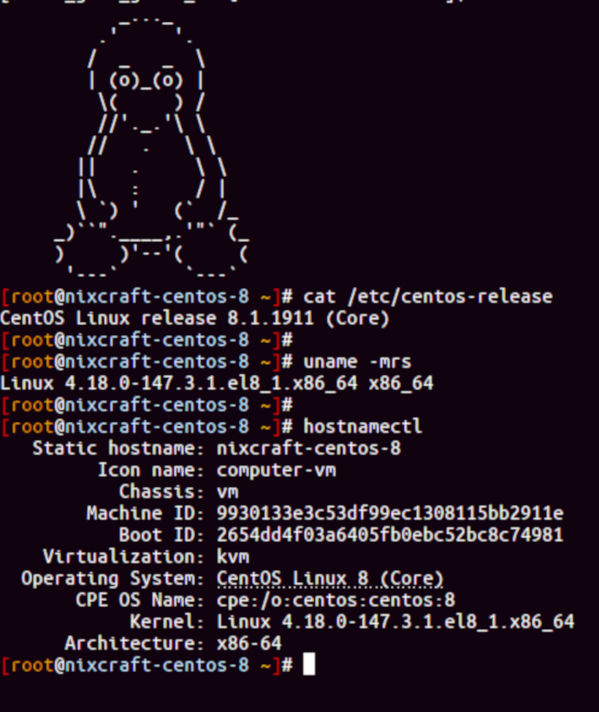The cloud by the name indicates something which is very huge and present over a large area. Going by the name, in a technical field, Cloud is something that is virtual and provides services…
Category / Linux

CentOS Linux 8.1 (1911) released and here is how to upgrade it
CentOS Linux 8.1 (1191) released. It is a Linux distribution derived from RHEL (Red Hat Enterprise Linux) 8.1 source code. CentOS was created when Red Hat stopped providing RHEL free. CentOS 8.1 gives complete control of its open-source software packages and is fully customized for research needs or for running a high-performance website without the need for license fees. Let us see what’s new in CentOS 8.1 (1911) and how to upgrade existing CentOS 8.0.1905 server to 8.1.1911 using the command line.
The post CentOS Linux 8.1 (1911) released and here is how to upgrade it appeared first on nixCraft.
4 Useful Tools to Monitor CPU and GPU Temperature in Ubuntu
The CPU or GPU temperature depends entirely on the usage of running programs or applications. Sensitive computer components such as CPUs have a finite lifespan and running them at a temperature that exceeds a…
How to Set Up a Local Yum/DNF Repository on CentOS 8
In this article, you will learn how you can locally set up a DNF or YUM repository on your CentOS 8 system using an ISO or an installation DVD. CentOS 8 ships with 2…
How to Increase Disk Inode Number in Linux
When a new file system is created on a partition on a disk in Linux, and the kernel keeps aside space for inodes during the initial structuring of the file system. The number of…
How to Secure Nginx with Let’s Encrypt on CentOS 8
Founded in April 2016 by the Electronic Frontier Foundation (EFF), Let’s Encrypt is a free and automated digital certificate that provides TLS encryption for websites at absolutely no cost at all. The objective of…
How to Setup an Anonymous FTP Download Server in Fedora
FTP, short for File Transfer Protocol, is a standard network protocol that was ones generally used for transferring files between a client and server, now it has been replaced by more secure and faster…
Upgrading Fedora 30 to Fedora 31
Fedora Linux 31 officially released and ships with GNOME 3.34, Kernel 5, Python 3, Perl 5, PHP 7, MariaDB 10, Ansible 2.7, Glibc 2.30, NodeJS 12 and many other improvements. If you are already…
How to Get Total Inodes of Root Partition
On Linux and other Unix-like operating systems, an inode stores information that describes a file or directory (also a file – because everything is a file in Unix) except its name and content or…
How to Fix Git Always Asking For User Credentials For HTTP(S) Authentication
To access or work with a remote Git repository, you can either use SSH or HTTP(S) protocols; with the former, when it comes to private repositories, you can simply configure SSH keys without a…
